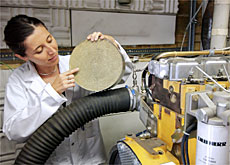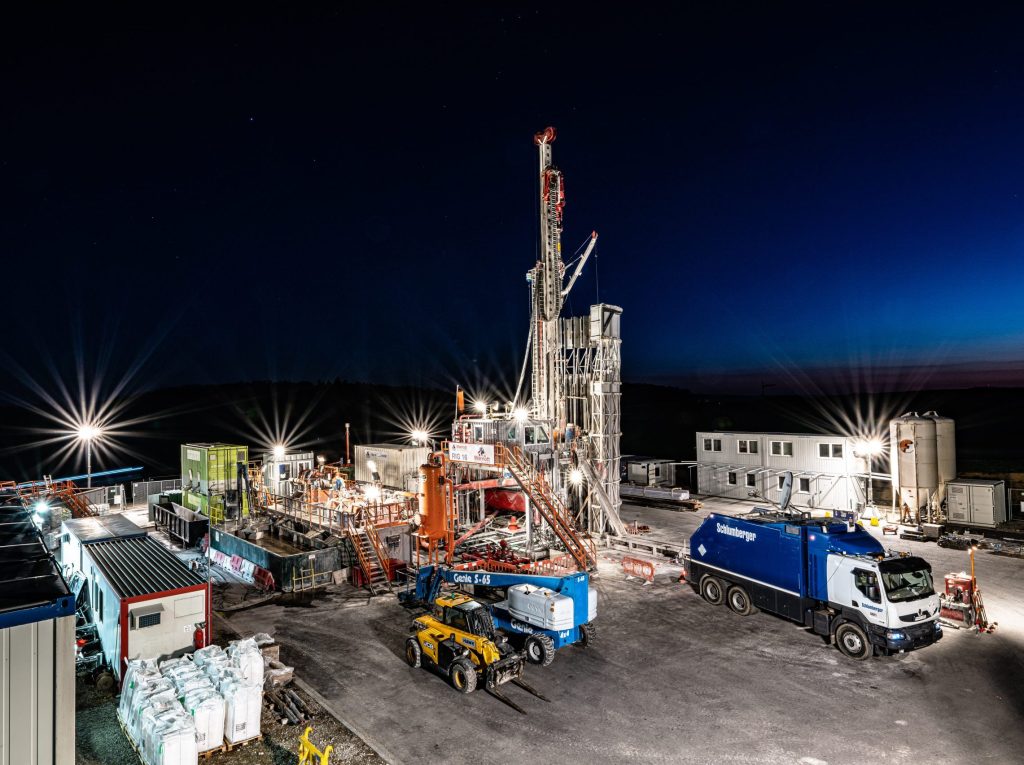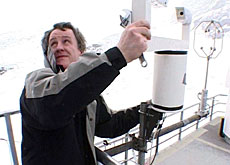Urine takes the stink out of diesel fumes

Researchers at Switzerland’s Paul Scherrer Institute (PSI) have come up with a novel way of dealing with noxious fumes produced by diesel engines.
They have developed a new catalytic converter based on urea, a compound found naturally in urine, which eliminates the pollution blamed for much of the summer ozone.
Diesel motors are considered more environmentally friendly than their petrol equivalents, but they have a major drawback. They emit nitrogen oxides, compounds believed to be largely responsible for driving up ozone levels – especially in summer.
Until now, there has been no catalytic converter that could efficiently break down these pollutants. The scientists at PSI decided to tackle the problem by using another nitrogen-based compound to transform the oxides.
“Our method is to apply urea, which is harmless and used as a fertiliser, to break down the oxides,” said Oliver Kroecher, who headed the research team in Villigen in northeastern Switzerland.
Slow process
The method seems straightforward. A urea solution is introduced into the exhaust outlet as a fine spray, where it breaks down into ammonia. It is this ammonia that reacts with the oxides, transforming them into nitrogen and water.
The problem is that this process is too slow under normal conditions, and this is where the science comes in. “What we needed for this reaction was a special catalyst to enhance it,” Kroecher told swissinfo.
The researchers’ work focused on the basic chemistry and developing the catalyst. The result involves a technique called Selective Catalytic Reduction (SCR), which has been around for the past 30 years.
“The first patents appeared in the early 1970s,” said Andreas Mayer, an engineering consultant who has worked on the technology in the past. “This technique has been applied to diesel engines for at least 20 years.”
The PSI researchers have chosen not to patent their findings. “What we are doing now is selling our know-how with a German partner company,” Kroecher said.
Drawbacks
The technology uses cheap materials, unlike catalytic converters found on passenger vehicles, which require expensive metals such as platinum to function.
The researchers say it is also efficient, breaking down more than 90 per cent of the exhaust oxides. Ultimately, they would like to completely eliminate these oxides from diesel fumes, along with all pollutants other than carbon dioxide.
The application of SCR remains mainly restricted to heavy-duty diesel engines for the time being.
“This technology works best with these engines, because they run at high temperatures,” said Kroecher. “We don’t know if it can be applied to passenger vehicles, because their motors run at far lower temperatures.”
Andreas Mayer says this is one of SCR’s biggest drawbacks, adding that even on heavy-duty engines it may not function properly all the time.
“These motors don’t usually run at full power in towns and cities, so I doubt the converter may be of any use when that happens,” he told swissinfo.
The consultant is not convinced either that SCR technology is a cure for diesel pollution. “The real problem is particle emissions, which cause many forms of lung disease, especially in children.”
“We should be concentrating on eliminating these emissions with efficient particle filters, and not worry so much about nitrogen oxides,” he added, saying so far there is no indication that the oxides are harmful.
EU deadline
Development of the new converter is well advanced. Tests have been carried out with Liebherr, a Swiss company that makes diesel engines.
“We expect our technology to be on the market soon, within the next 18 months,” added Kroecher. “There’s been a lot of interest from truck manufacturers.”
Heavy-vehicle constructors have an added incentive, with a major deadline looming. By the end of 2005, the European Union will introduce new, tougher emission limits for diesel engines.
To be sold within the EU, all new vehicles will have to conform to these limits. The sales prospects for the technology are good, although nobody wants to say exactly how much revenue could be generated.
“We really don’t know what kind of sales figures to expect,” Kroecher told swissinfo. “But we do believe it could run into millions of Swiss francs.”
swissinfo, Scott Capper
A catalytic converter is a device in the vehicle exhaust system that chemically changes pollutants into harmless substances.
The catalyst is a compound used to speed up any chemical reaction, and in the catalytic converters of passenger cars, is usually platinum-based.
Converters are not found on diesel engines at present.

In compliance with the JTI standards
More: SWI swissinfo.ch certified by the Journalism Trust Initiative











You can find an overview of ongoing debates with our journalists here . Please join us!
If you want to start a conversation about a topic raised in this article or want to report factual errors, email us at english@swissinfo.ch.